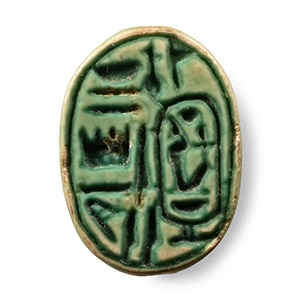Home > Auctions > 4 June - 8 June 2024
Ancient Art, Antiquities, Natural History & Coins
Auction Highlights:
Ex Emile Bouillon Bey, c. 1880.
From the Gaston Maspero Archaeological Fund.
with Hotel des Ventes du Perigord, Bergerac, 24 June 2007.
Property of a French collector.
Cf. Petrie, W.M.F., Scarabs and Cylinders with Names, London, 1917, pl. XLII, no. 116, for another block bead design for Ramesses II.
Acquired on the German art market, 1989-1995.
with The Museum Gallery, 19 Bury Place, London, WC1, UK, 1998-2003.
Property of a London based academic, 2003-present.
Cf. Daressy, G., Catalogue général des antiquités égyptiennes du Musée du Caire N° 38001-39384 Statues de divinités, Cairo, 1906, pl. XVIII, no. 38.275, for a comparable figure.
Osiris was a deity who represents death and fertility and is commonly regarded as the quintessential god of rebirth. Though he was once a mortal ruler, as a deceased entity, his domain was the Underworld. Small figurines like this example were dedicated to the god to ensure his good favour.
Acquired on the German art market, 1989-1995.
with The Museum Gallery, 19 Bury Place, London, WC1, UK, 1998-2003.
Property of a London based academic, 2003-present.
Cf. Tinius, I., Altägypten in Braunschweig. Die Sammlungen des Herzog Anton Ulrich-Museums und des Städtischen Museums, Wiesbaden, 2011, p.104, no. 152, for similar.
Osiris is a deity who represents death and fertility and is commonly regarded as the quintessential god of rebirth. Though he was once a mortal ruler, as a deceased entity, his domain was the Underworld. Abydos was the primary centre of Osiris’ cult, where a renowned yearly celebration of the god was held. Many small figurines like this were dedicated to the god at temples throughout Egypt.
From an old Nevers collection, acquired before 1960.
Ex Hotel des Ventes de Nevers.
Property of a French collector.
This lot has been checked against the Interpol Database of stolen works of art and is accompanied by a search certificate number no.12035-214900.
Cf. Esperandieu, E. & Rolland, H., Bronzes Antiques de la Seine Maritime, XIII Supplement a Gallia, Paris, 1959, no.178; Rolland, H., Bronzes Antiques de Haute Provence, Paris, 1965, item 196; see also the Metropolitan Museum of Art, accession no.97.22.6.
The exact meaning of these grotesque busts surmounted by a phallus is disputed, although Rolland (p.106) believes that they originated in Alexandria among the priests of the cult of Isis. Similar busts have been discovered in the Roman Gallia, at Bavay and Strasbourg.
Seward Kennedy collection, acquired 1960s.
This lot has been checked against the Interpol Database of stolen works of art and is accompanied by search certificate number no.11840-207822.
Cf. The Brooklyn Museum, accession number 53.76.2, for a broadly similar object; Tiribilli, E., The Bronze Figurines of the Petrie Museum from 2000 BC to AD 400, London, 2018, pp.288-290, for similar examples.
This large feather is part of an Atef crown that would have been attached to a wooden statue of Osiris, the powerful underworld deity. The crown combines the Hedjet, the White Crown of Upper Egypt, flanked by ostrich feathers on each side to form the Atef crown.
Jean P. Bourgis, Beaulieu Sur-Mer, France; acquired 1980.
Ex Mythes & Legend.
Ex Cohen collection 2011.
Property of a French collector.
Cf. Andrews, C., Amulets of Ancient Egypt, London, 1994, item 18(a).
In ancient Egyptian mythology, Isis was the sister-wife of Osiris and the mother of the sky god Horus. She is associated with aspects of fertility and motherhood and is often depicted in various artworks seated in a nursing pose with her son Horus on her lap, as here.
From an early 20th century French collection.
Cf. Andrews, C., Amulets of Ancient Egypt, London, 1994, item 29(c).
The goddess Bastet was believed to be the daughter of the sun god and was shown with the features of a lion up until about 1000 B.C. when she was first portrayed as a cat or human with a cat head. As the daughter of Ra she was associated with the rage inherent in the sun god's eye which was considered to be his instrument of vengeance. Her development into a cat goddess occurred during the New Kingdom but did not fully develop until the Late Period. She was still associated with the destructive power of the sun and was shown on the prow of the solar boat, decapitating the evil serpent Apophis in the Book of the Dead. The maternal, protective and hunting characteristics of the cat are obvious in Bastet and she was seen as a protector of pregnant women and young children. In the Pyramid Texts she is invoked by the deceased king to act as his protector and to help him reach the sky to join the sun god; the king proclaims that Bastet is his mother and nurse. Like her counterpart, Sekhmet, Bastet has an aggressive side and, in a text from Karnak, Amenhotep II described his enemies being slaughtered like the victims of Bastet. The goddess had a shrine at Karnak, where she is known as the 'Lady of Asheru' which aligns her closely with the goddess Mut, the consort of Amun-Ra. Her most famous shrine was in the north-east Delta region, at Bubastis, and was known as Per-Bastet or 'the House of Bastet.' Herodotus describes the festival of Bastet as one of the most elaborate in all of Egypt and identifies her with the Greek Artemis. Cemeteries of cats have been excavated at Bubastis and at Saqqara and Memphis.
Acquired in the mid 1980s-1990s.
From the family collection of Mr S.A., Switzerland, thence by descent.
Private collection since the late 1990s.
Cf. Petrie, W.M.F., Objects of Daily Use, Warminster, 1972, pl. XIII, no. 133, for a vertical oval bezel with a similar hieroglyphic inscription.
Ex R.K. collection, early 1980s.
UK private collection before 2000.
Property of a London gentleman.
This lot has been checked against the Interpol Database of stolen works of art and is accompanied by a search certificate number no.12082-217353.
Cf. Andrews, C., Ancient Egyptian Jewellery, London, 1990, p.165, no.148, for the type; Tinius, I., Altägypten in Braunschweig. Die Sammlungen des Herzog Anton Ulrich-Museums und des Städtischen Museums, Wiesbaden, 2011, p.175, no. 345, for a faience ring of similar style.
From an early 20th century collection.
From the collection of Doctor Girard, a collector for over 60 years.
with Hotel des Ventes de Clermont-Ferrand, 22 May 2017.
Property of a French collector.
Cf. Newberry, P.E., Catalogue général des antiquités égyptiennes du Musée du Caire N° 36001-37521, Scarab-shaped Seals, Cairo, 1907, pl. IV, no. 36202, for a scarab with a similar layout belonging to one of Amenhotep III's predecessors.
25 - 36 of 2809 LOTS

.jpg)

.jpg)
.jpg)
.jpg)

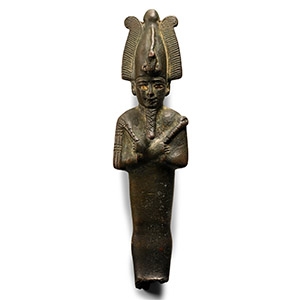
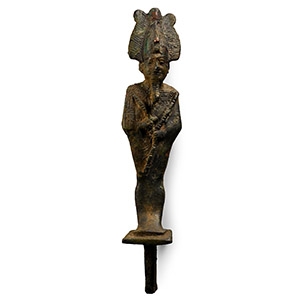
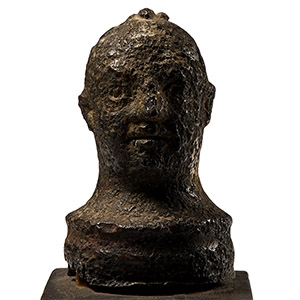
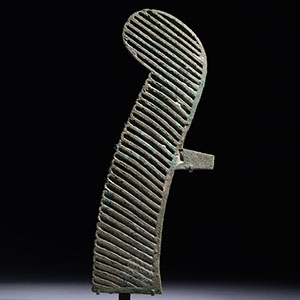
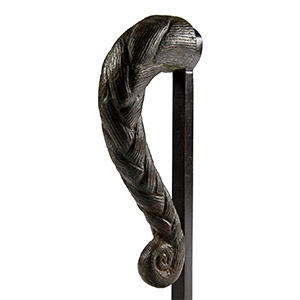
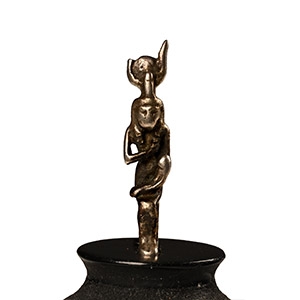
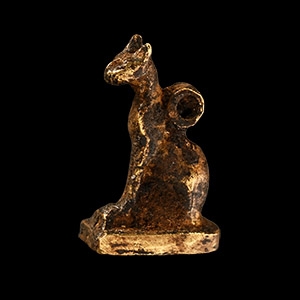
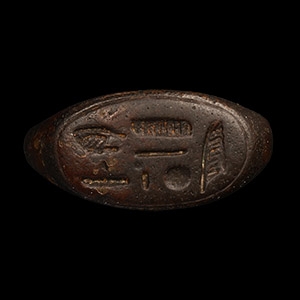
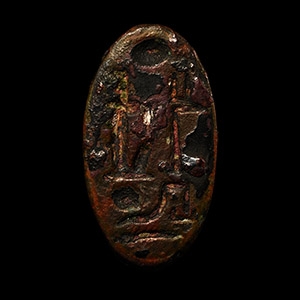
.jpg)
